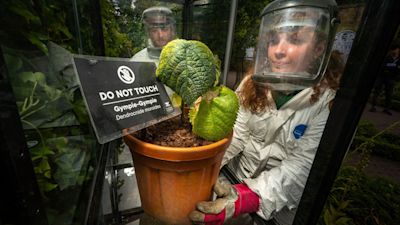World's 'most venomous' gympie gympie plant to be displayed at Alnwick Garden

The world's "most venomous" plant, capable of delivering a sting similar to being burnt with hot acid and electrocuted at the same time, is going on display at Alnwick Garden.
The gympie gympie, also known as the Australian stinging tree, is a nettle-like shrub typically found in the rainforest areas of Australasia.
The Alnwick Garden, in Northumberland, has its own poison garden which has about 100 toxic, intoxicating and narcotic plants.
The plant was only made available for display after a man grew it at his home last year but made the decision to get rid of it because of its dangerous nature.
John Knox, head guide at the poison garden, said: “It is such a rare and exciting plant to now be able to display and educate visitors around.
“The tiny brittle hairs (known as trichomes) are loaded with toxins over the entire plant and if touched, stay in the skin for up to a year, and release the toxin cocktail into the body during triggering events such as touching the affected area, contact with water, or temperature changes.
“Even if touched for even a second, the tiny hair-like needles will deliver a burning sensation that will intensify for the next 20 to 30 minutes, continuing for weeks or even months.”
The plant was originally discovered in Australia in 1866 when it is said to have caused the death of a horse after stinging it.
The gympie gympie name comes from the language of the Indigenous Gubbi Gubbi people of south-eastern Queensland.
It is capable of growing up to ten metres in height but tends to flower at around three metres tall instead.
Want a quick and expert briefing on the biggest news stories? Listen to our latest podcasts to find out What You Need To Know...